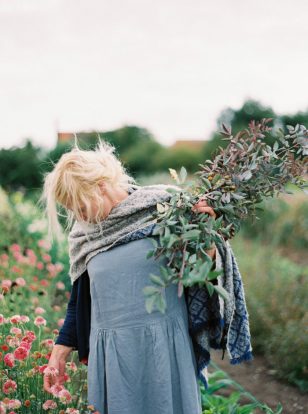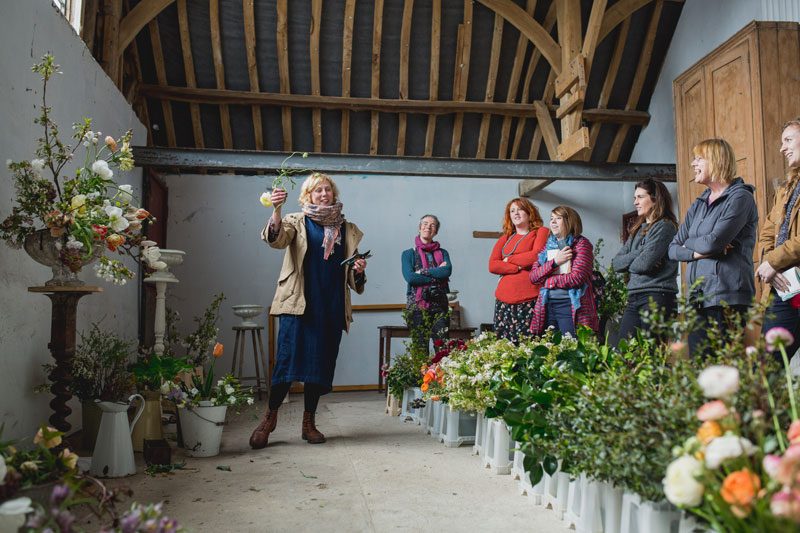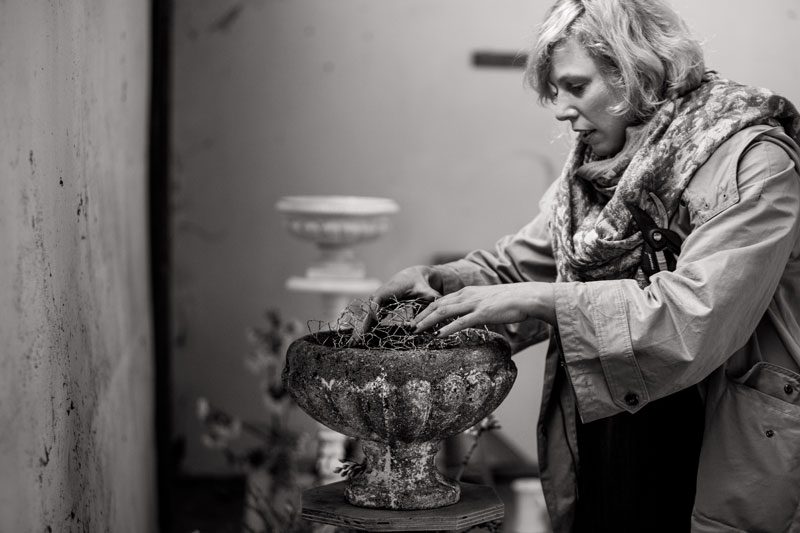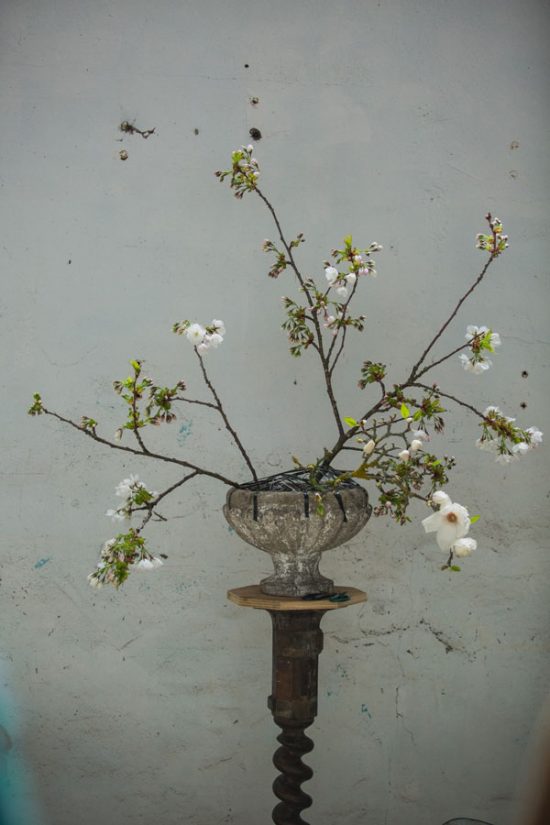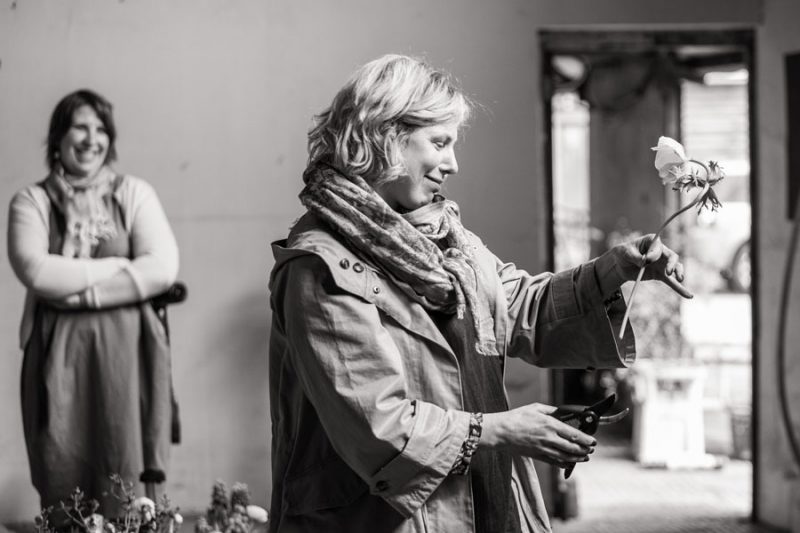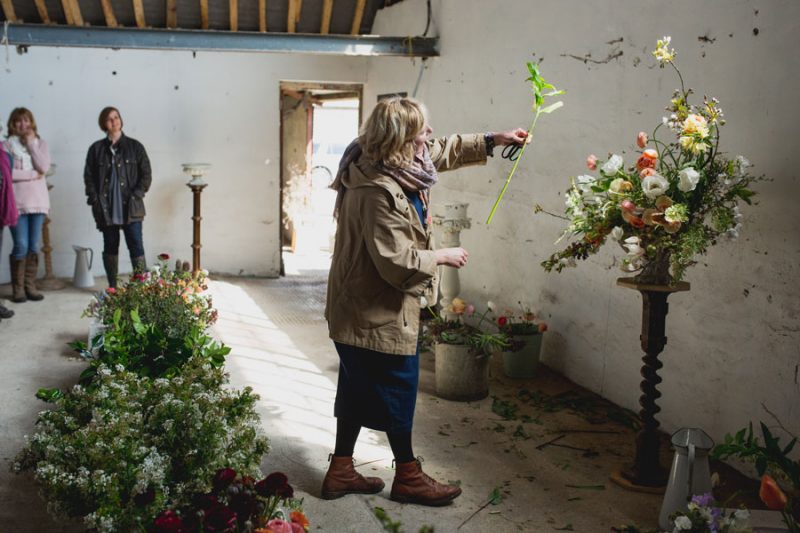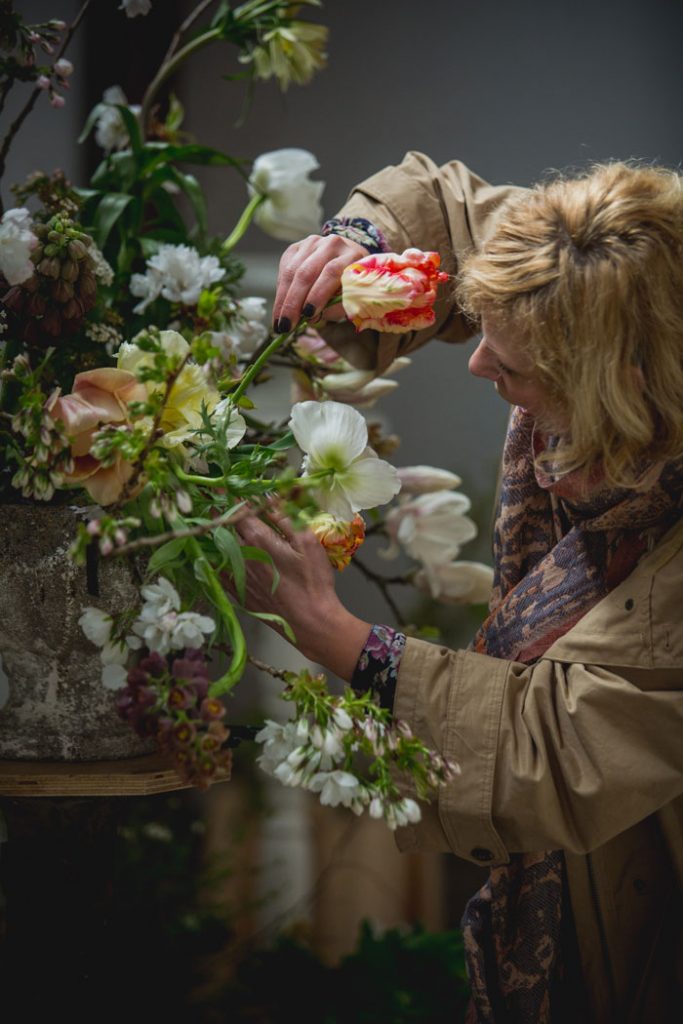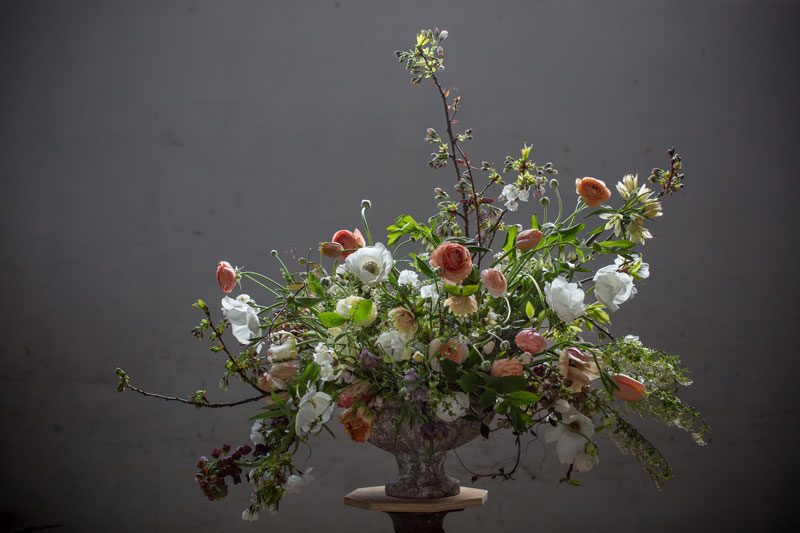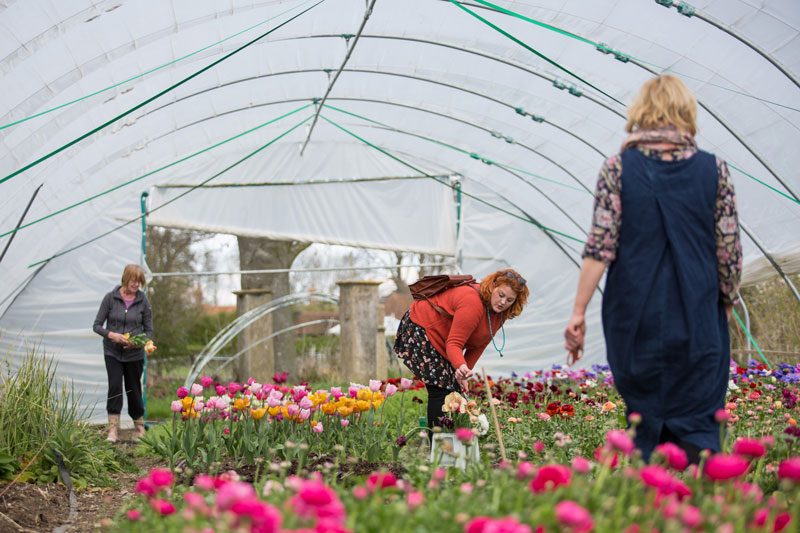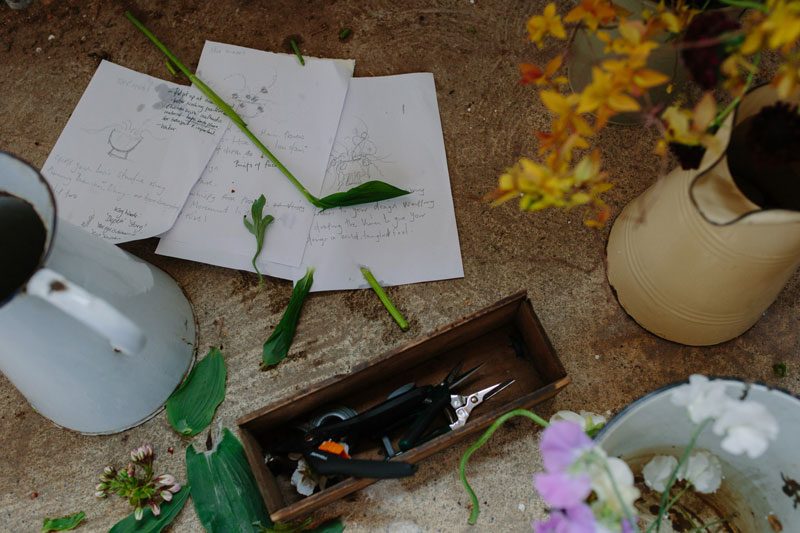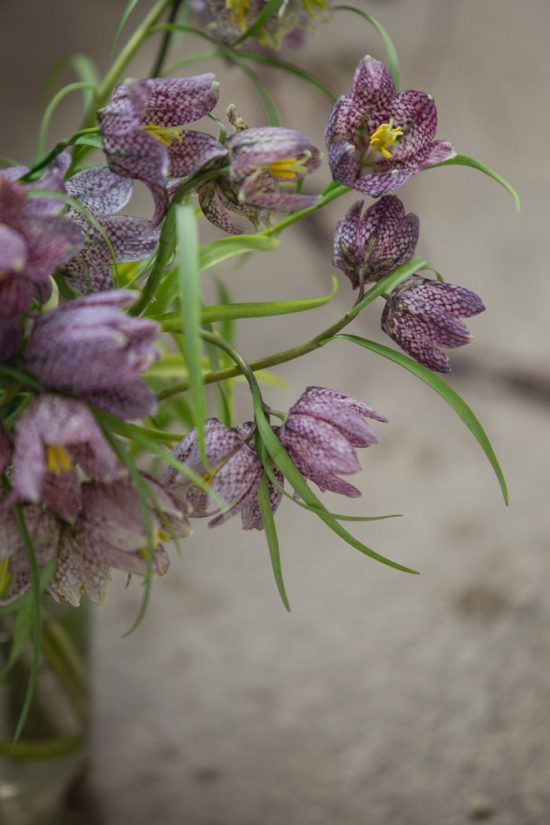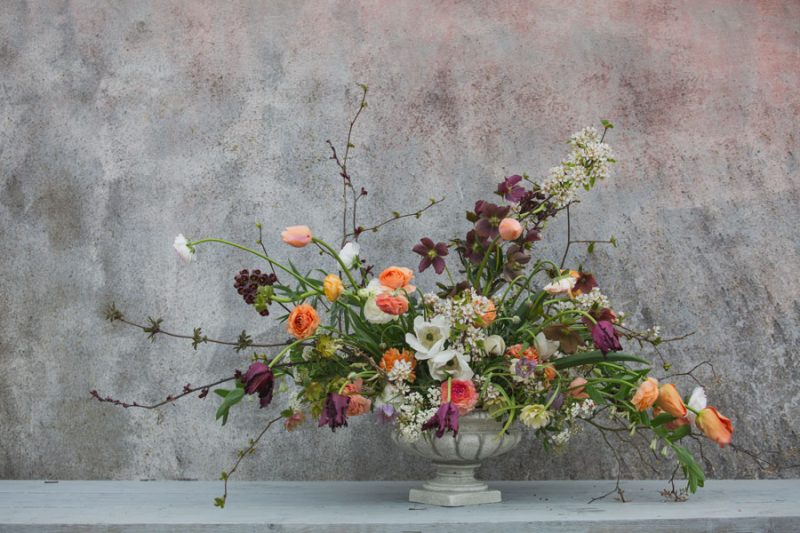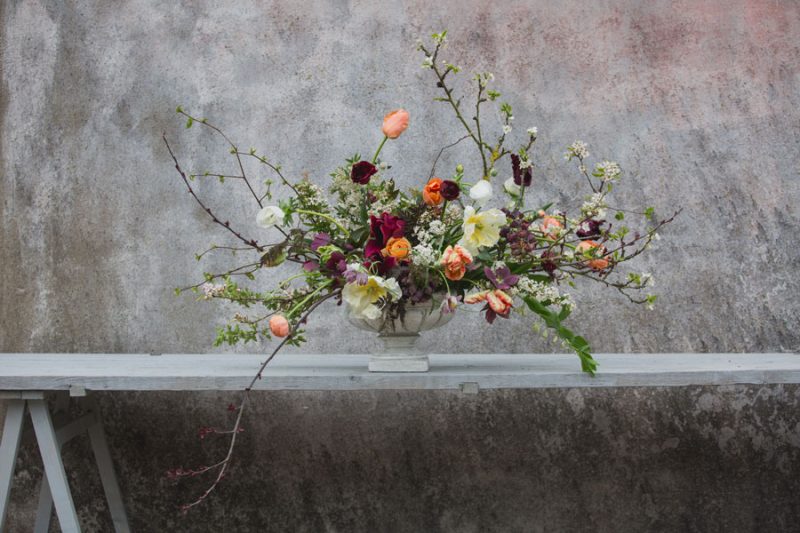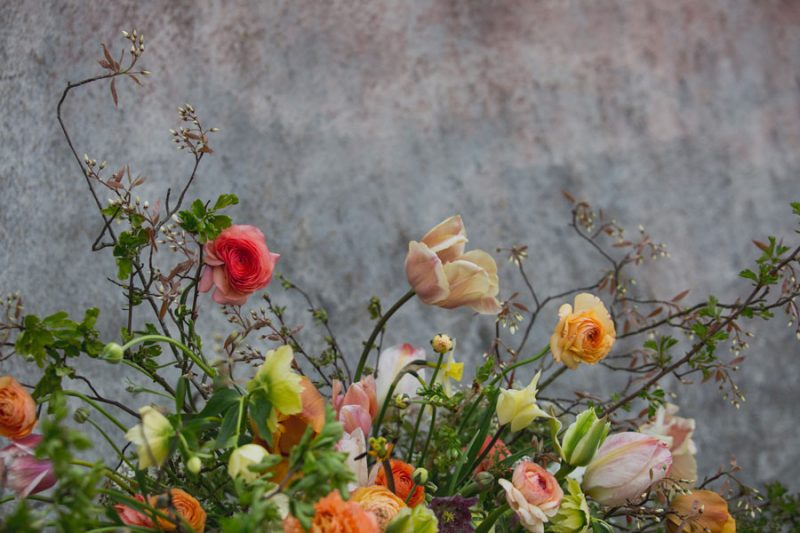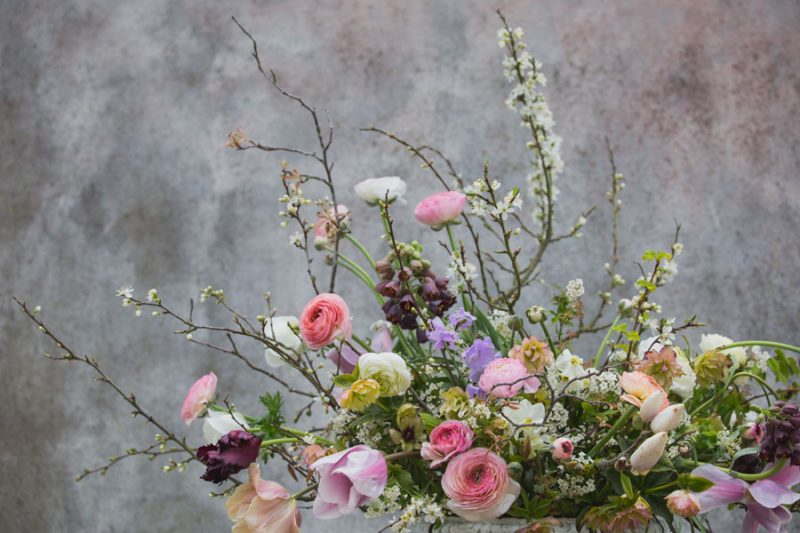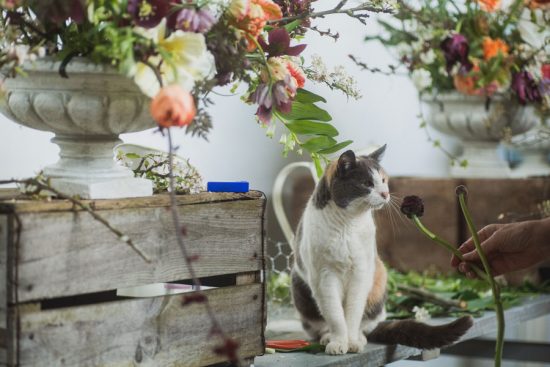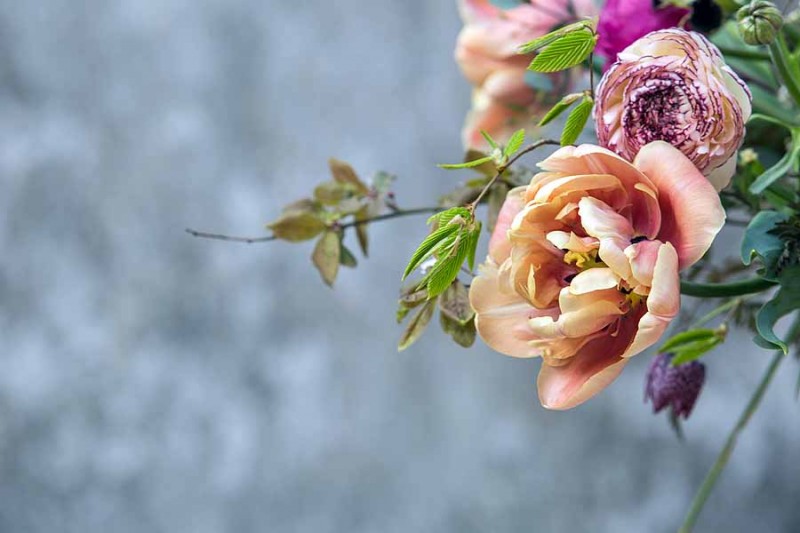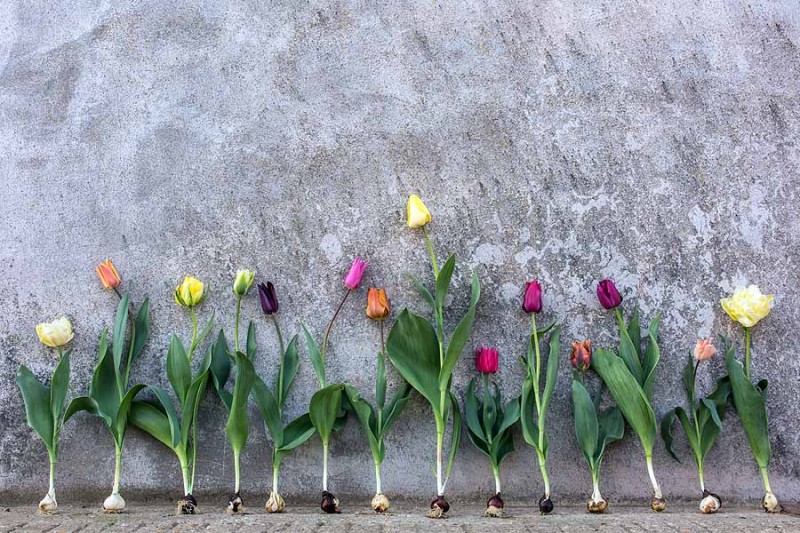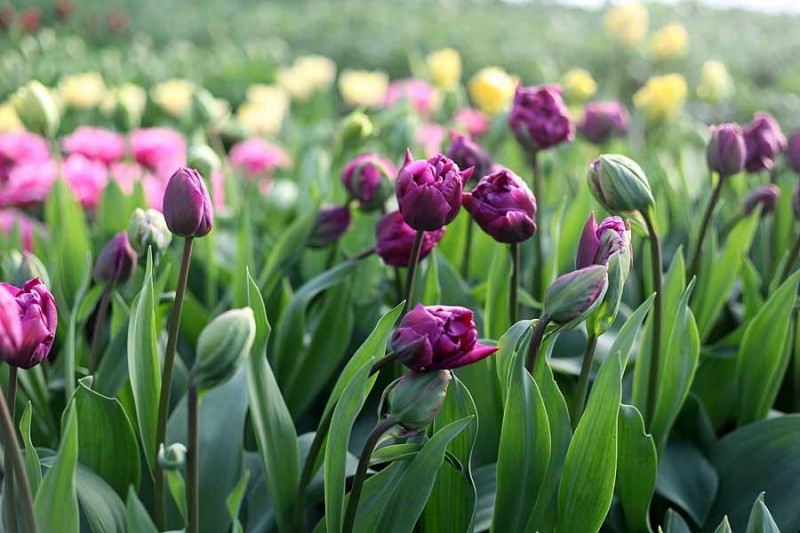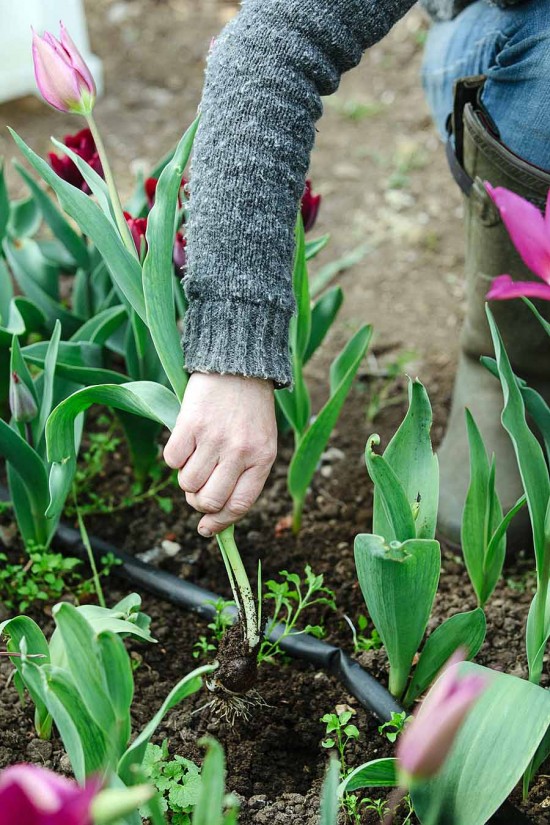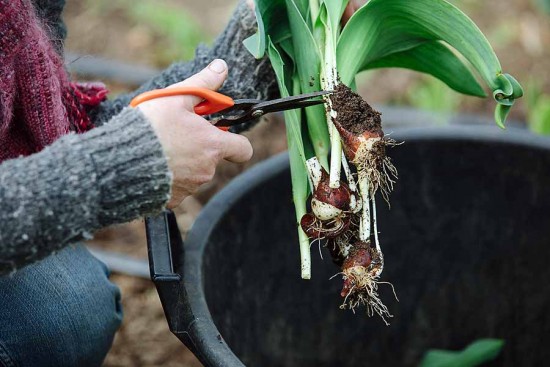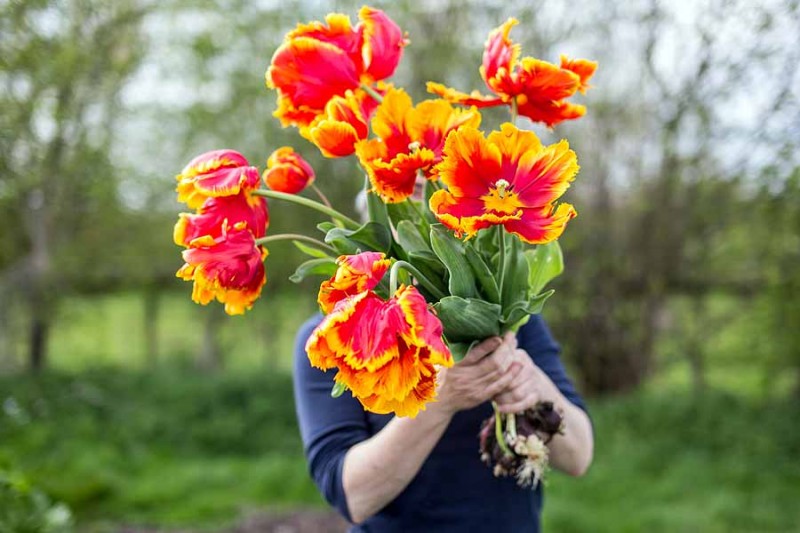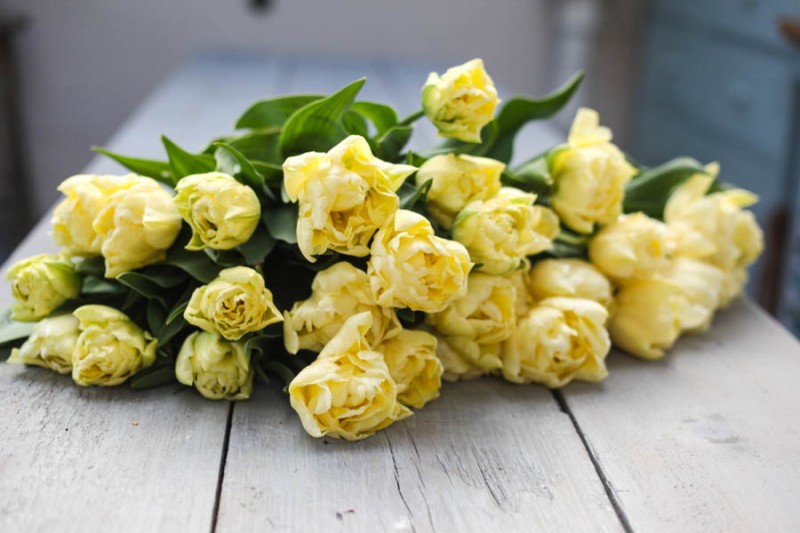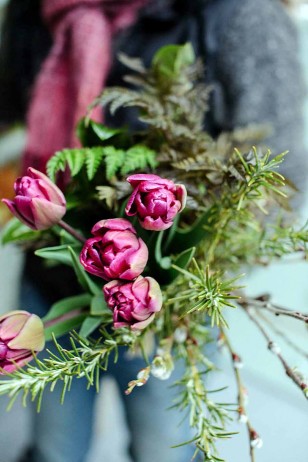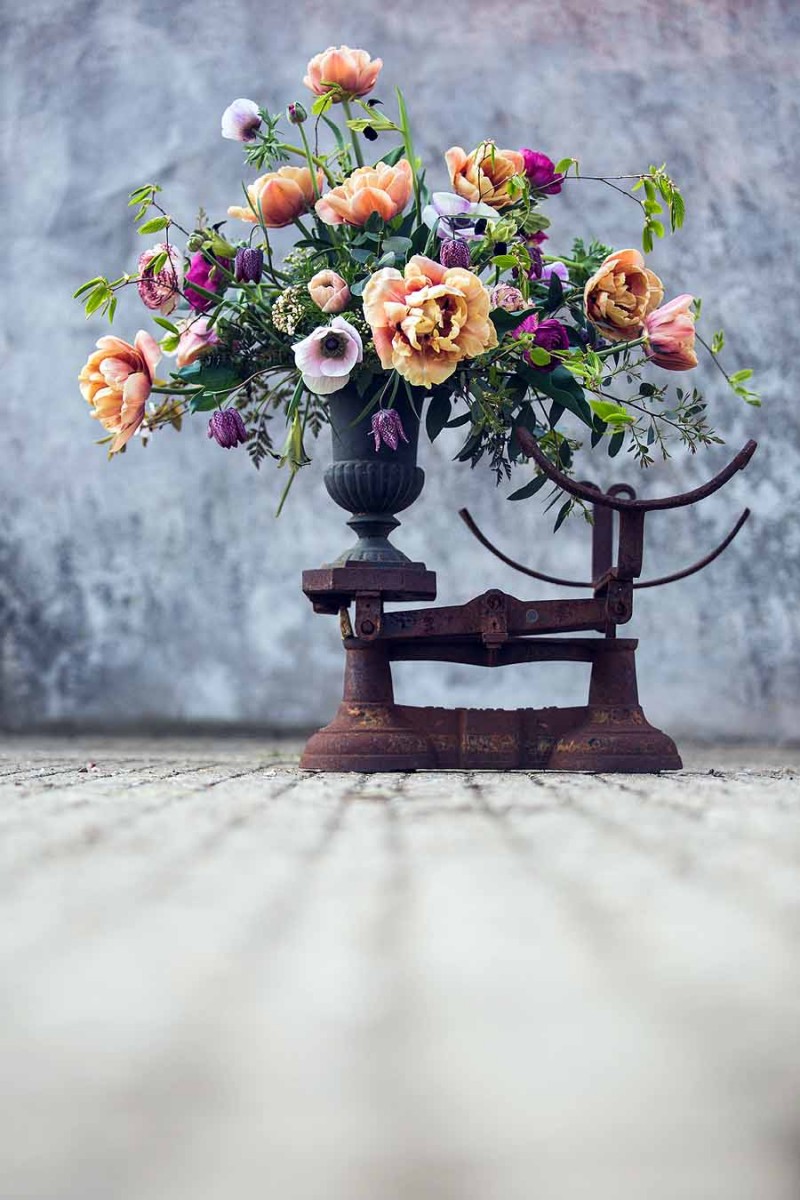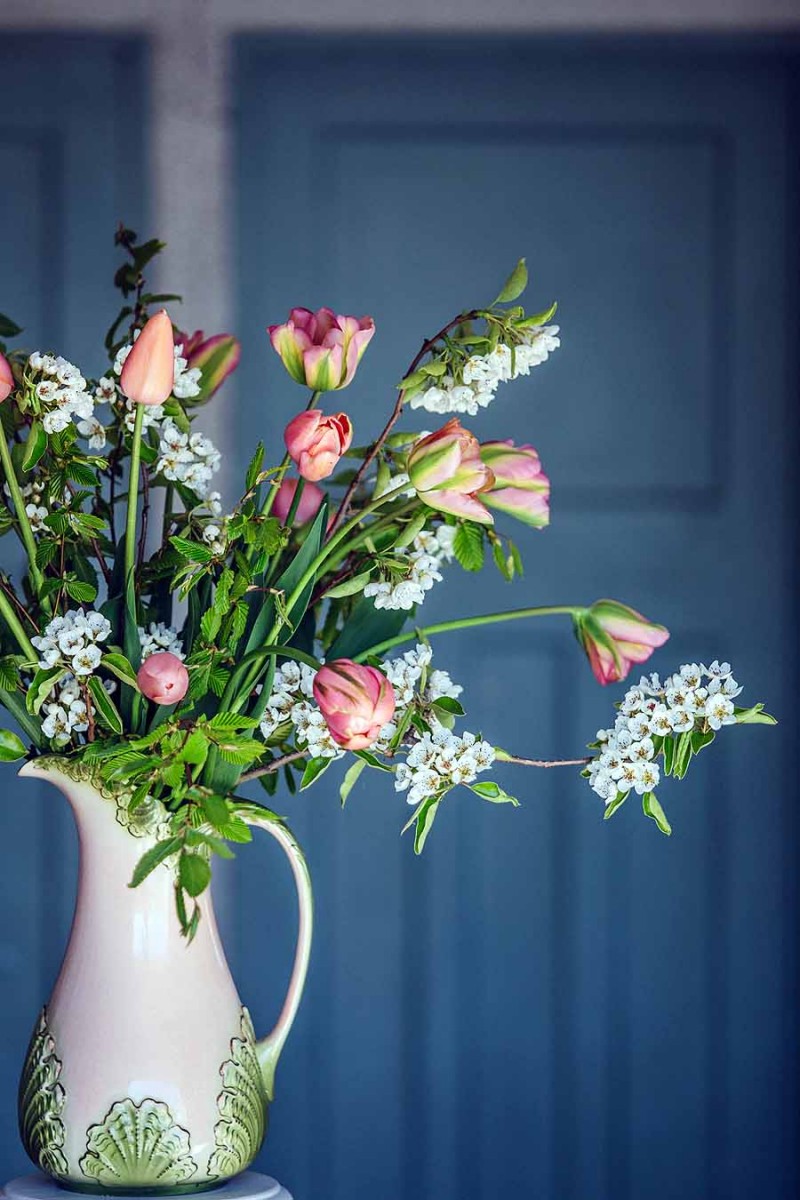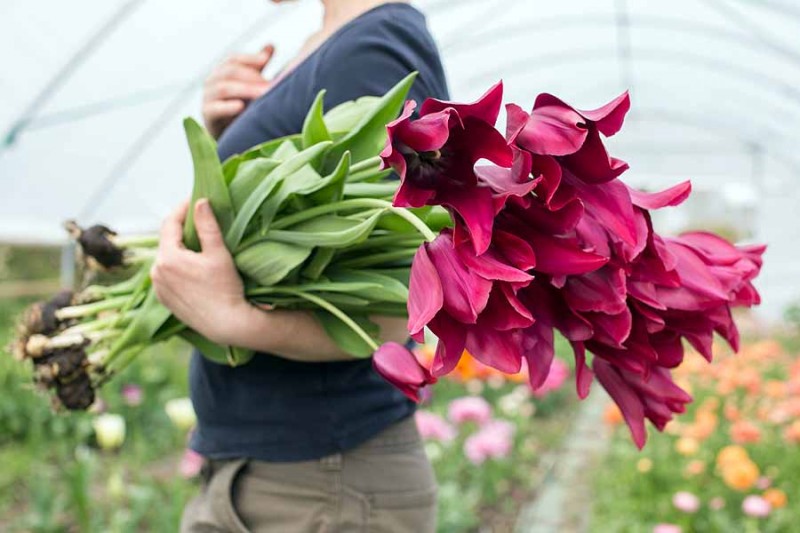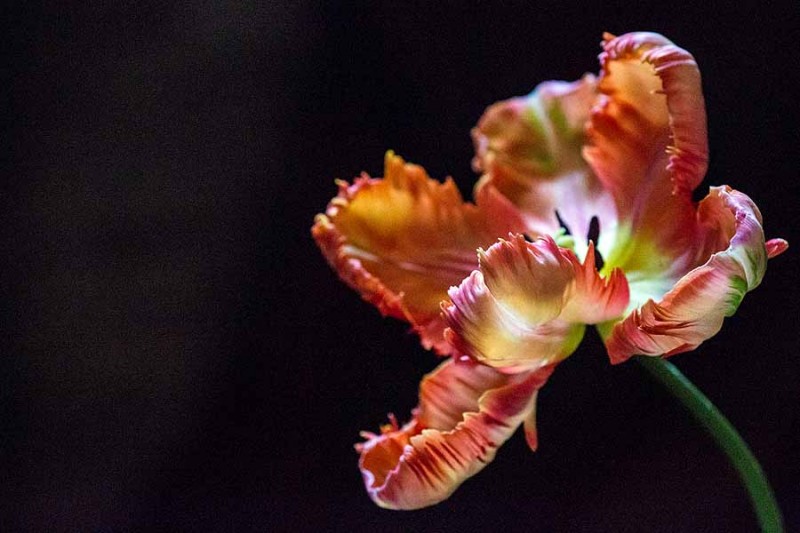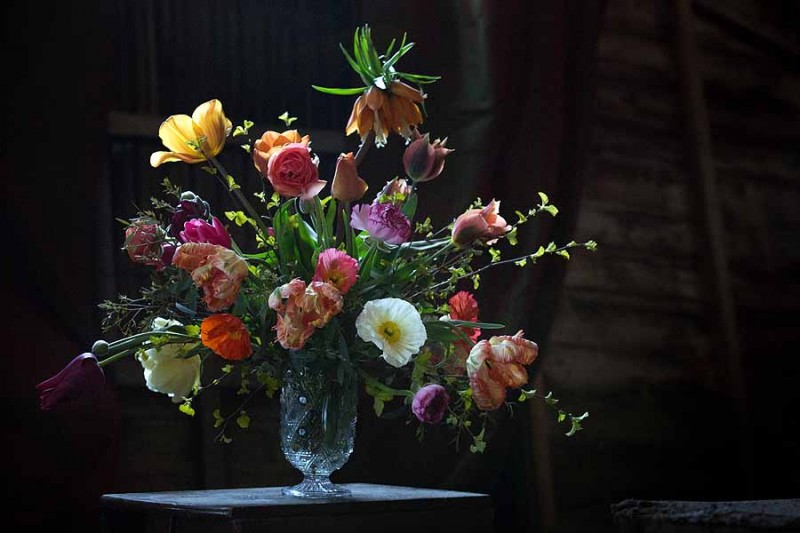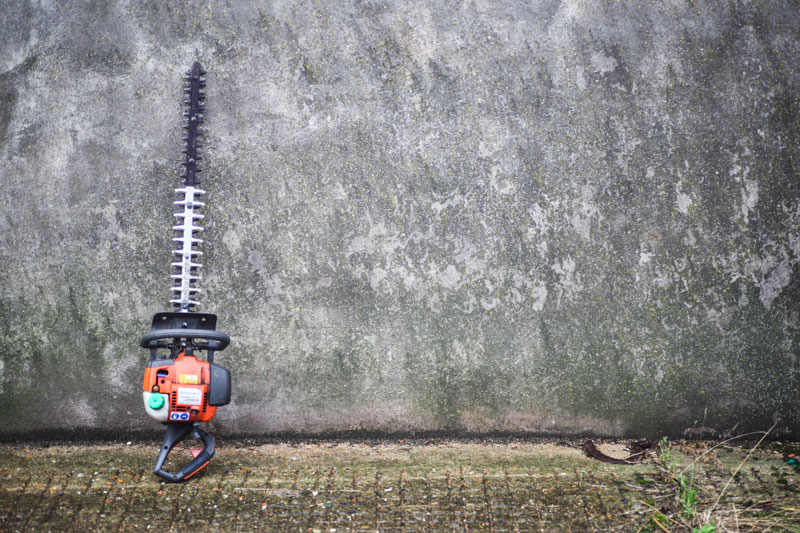
As horticulturalists, we all have to use our bodies about ten times more than the average punter, so I think we are in the best position to appreciate the odd spot of motorized help. I know it can be daunting to the newbies out there but getting to grips with some machinery is going to be essential to your growing business and fading body. So I have outlined a few options for making your life easier with small machinery, but you are going to have to fill up the odd jerry can on the way. I have saved rotovators for another day…
Hedge Trimmer
A beefy hedge trimmer can be very useful, as well as doing the obvious gardening duties. It can help you chop up woody waste and bulky stems on the compost heap to permit faster breakdown and allow rain to penetrate the heap. You will have lots more bulky and woodier material growing flowers, so your compost heap needs to be adjusted accordingly – you will need to find some greener, more nitrogenous material ideally to move things along. If you have a hedge trimmer it can save you getting a shredder and also makes clearing easier. You can sometimes cut down stems above and below bean netting to make extracting it easier from larger crops – there’s a Top Tip.

I myself haven’t got on with the multi tool system with the various ends that attach to a 2 stroke unit, I find the Ryobi one I have (for emergencies) underpowered and a real pain to use for anything. It’s a very attractive proposition however, it’s probably just another example of ‘you get what you pay for’ or ‘should have bought a Stihl’.
Ride on Mower

NOTE MACHINE FOR SPARES IN BACKGROUND, never been able to get the Ag tyres off it
I think these are almost essential kit to help out growers on a small scale, especially as 2nd hand decent machines are still available, they are simple to maintain with lots of spares and technical info freely available. Apart from mowing grass paths whilst you are carting waste or manure in a trailer (2 jobs for the price of one), they can also clear some crops and cut green manures.
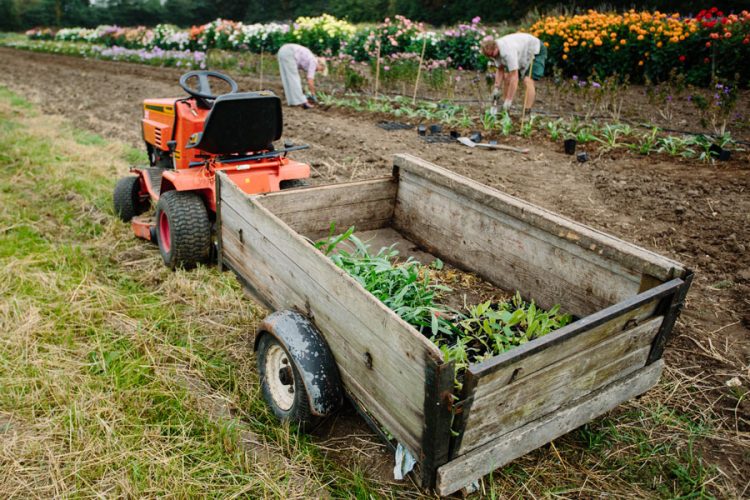
![]()
In conjunction with a small trailer they really can be motivational, compared to barrows that get full up with plant material in a jiffy (even with a 120L one). It can make clearing crops or cutting back with more than 1 person much more practical. They can make mucking beds easier as you can shovel directly from the back of a trailer…Ok, I’ll stop going on now.
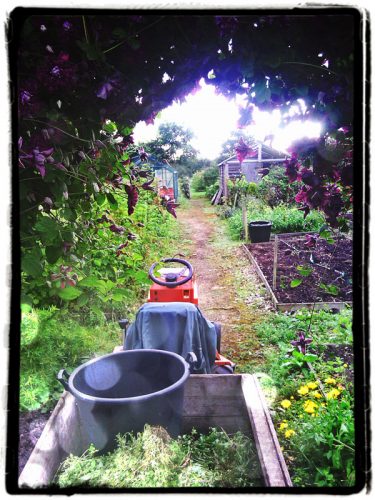
MOWER FAIRYLAND or a trailer full of weeds…
The kind of thing I’m talking about is a Mountfield, Countax or Westwood and old enough to consist of a lawnmower engine, with belts that run a cutting deck and back to a simple gearbox that drives the wheels. Usually 8 to 15hp in size, I have a 13hp Westwood that was only £350 on ebay and can tow large chicken coops. All the moving parts are on show and it is usually easy to spot problems – many parts and diagrams available from this website, Westwood Tractor Spares (they support lots of other makes too). If you do keep it cheap and cheerful with an older machine then if mechanical problems are more serious than swapping out easy parts (starter, solenoid, belts, blades, battery, possibly carburettor) then keep it for spares and get another one!
Shredder
So, it’s not the first thing to go and buy as they are expensive but they enable you to compost more effectively, although you have to factor in the time taken to shred your waste. You can also shred back onto beds directly and let material break down in situ (ok, not rose clippings but you’re burning those right?), which is quite a useful winter cover idea and labour saver. I covered a bit on our shredder in a composting blog a while back.
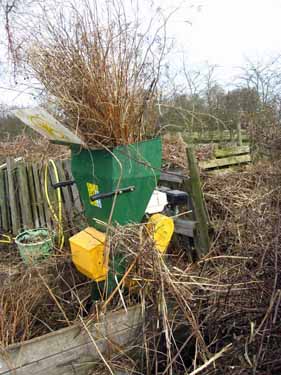
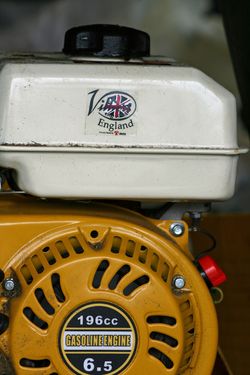
Compact tractor
Our site at G&G was designed with access to a compact tractor, (up to 20hp) like a Kubota/Iseki/Yanmar, so we have wide paths accordingly. They can be a really good investment if you have a larger plot as they can do all the things a ride on can but with the bonus of rotavating/ploughing, spreading manure too. If you get a larger one, a loader/bucket on the front is feasible and it can be your ‘goto’ solution for everything (See Floret’s Farm for example).
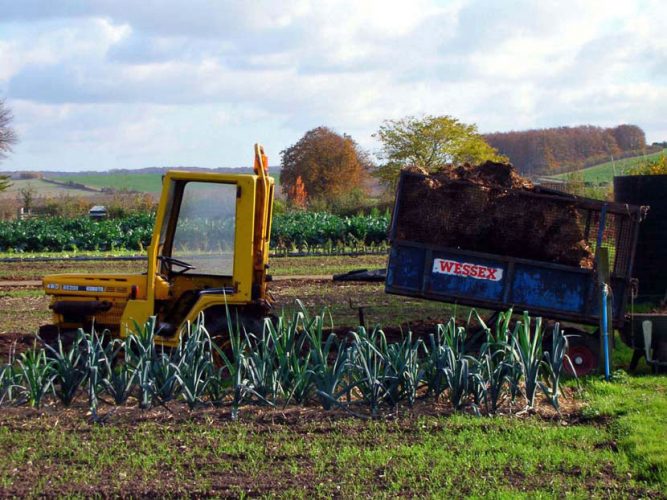
We were able to borrow the farm’s Kubota initially when we started out growing vegetables – a bright yellow ex-gritting thing from Scotland that even had a cab, which was a real squeeze. We don’t use one now as we have a large tractor and C8 rotavator but I wouldn’t say no if one was available. We have gardening, market garden and field scale plots at G&G so that visitors/attendees can see the space that suits them, but we always stress planning your beds around practical aspects like machinery, as well as the more obvious factors like irrigation, shelter, aspect and soil considerations.

THE SCOTTISH JALOPY with a Kubota rotavator
The Japanese/Asian brands I mentioned earlier are the most common at this size, especially second hand. Kubotas certainly hold their value and tend to be pretty bombproof and go forever. Beware the cheap Chinese rotavators and toppers often supplied with compact tractors as ‘smallholder packages’.
Maintenance and Repair
So, of course with some considerable gain comes a little pain – there will be a spot of winter TLC. I tend to just make sure I look at the filters (cleaning air, replacing fuel), with general greasing and lubrication and an do an oil change every year. Anything else is a bit OTT for the mostly old and tired fleet of machinery I have, but there are many resources online now and many hours can be wasted on YouTube in this area…You are supposed to run the fuel tank dry for winter storage, but hands up I have never been able to be organized enough to do that – preferring the ‘use it every now and then’ to stop it completely seizing up or giving it an excuse to let you down come Springtime.
Procurement
Obviously Ebay is a great starting point to familiarize yourself with makes, models and prices with garden maintenance shops also selling older mowers and strimmers. The down season is perfect to spend some months keeping an eye out online. The usual ‘buyer beware’ common sense rules apply here, so do your homework and try and have a conversation with the buyer. If they don’t know anything about it or how they have been maintaining it, it could well be stolen or not in very good condition. You have to be prepared to be a tyre kicker sometimes when handing over cash after inspection and the machine is not a good deal. I have only done it once and got a barrage of swearing as I walked all the way back to the car. But I have also paid cash for a 2nd hand Stihl strimmer in a dark car park ten years ago and it’s never let me down.
So do share any other favourite motorized aids for the flower grower, or if you’ve gone cordless instead!
Ashley

